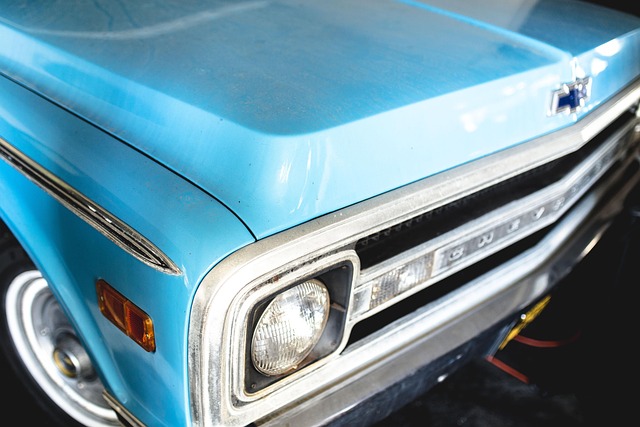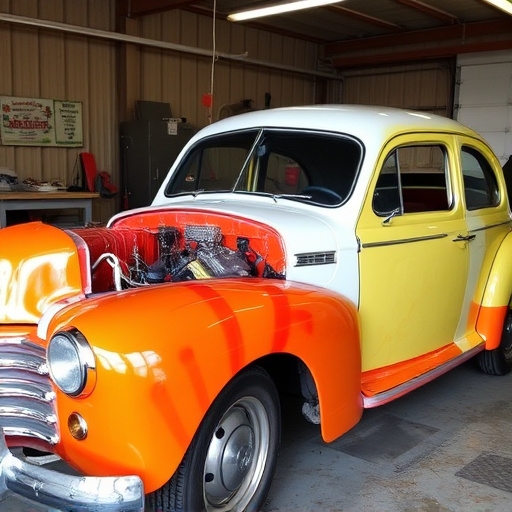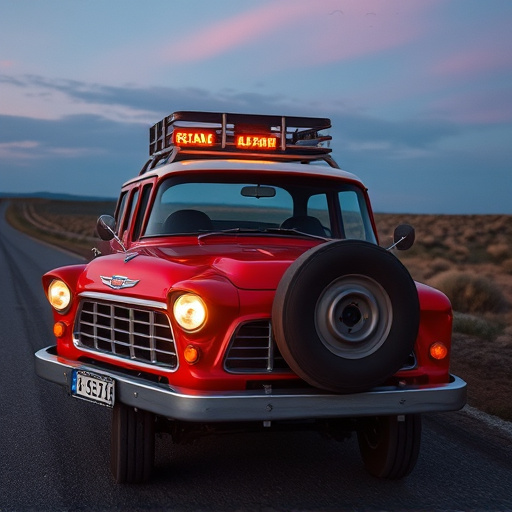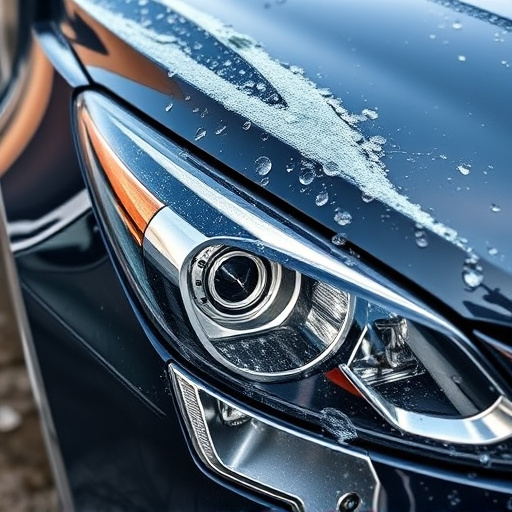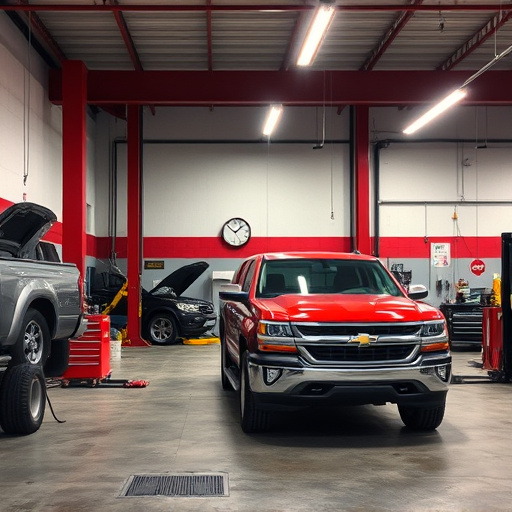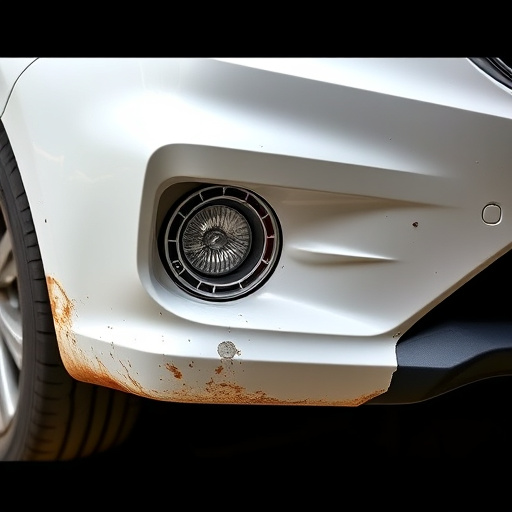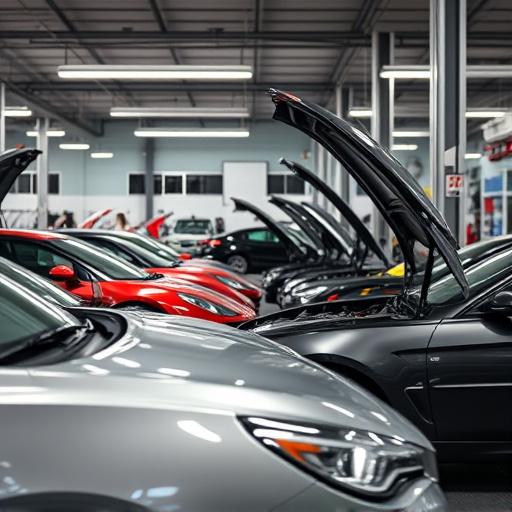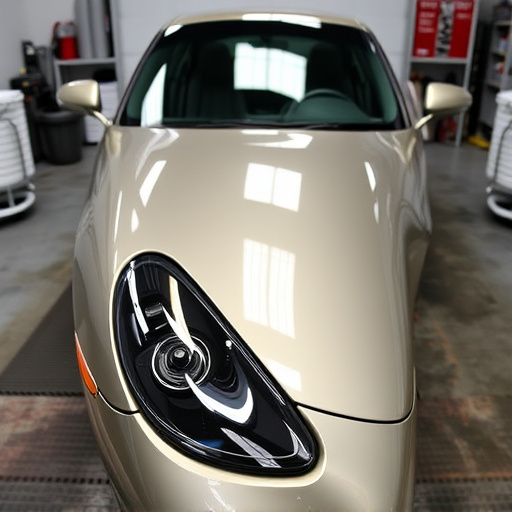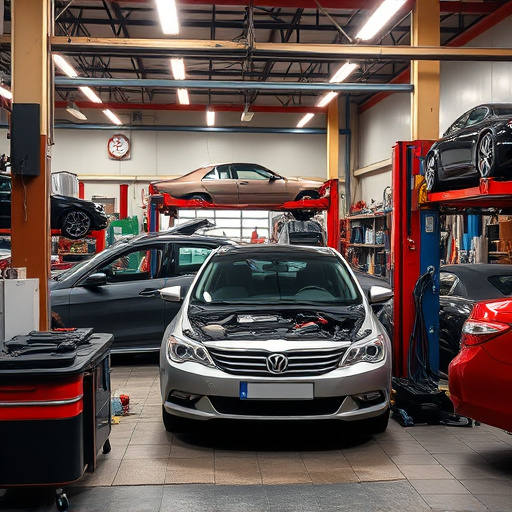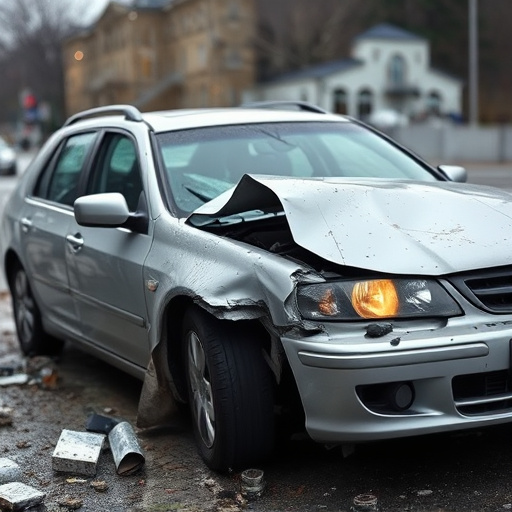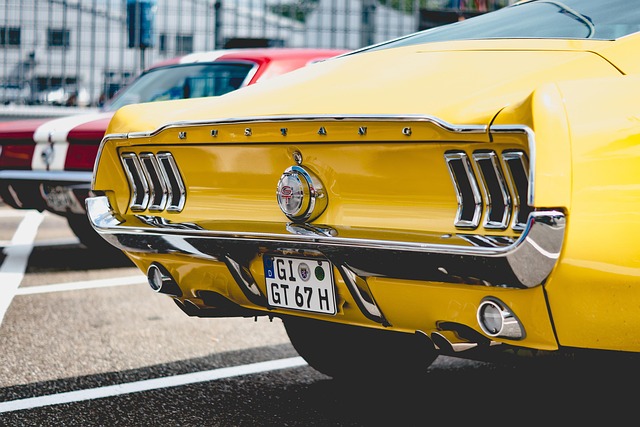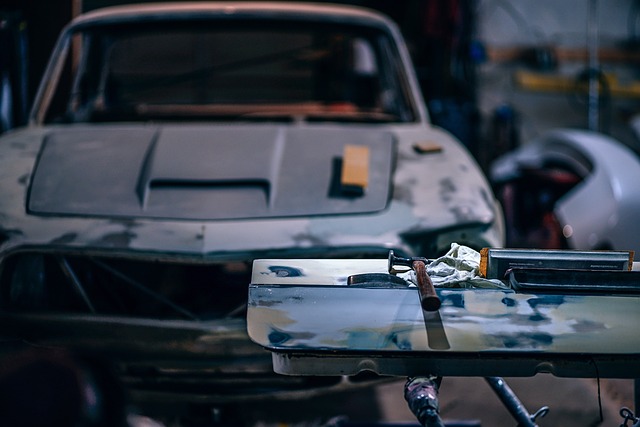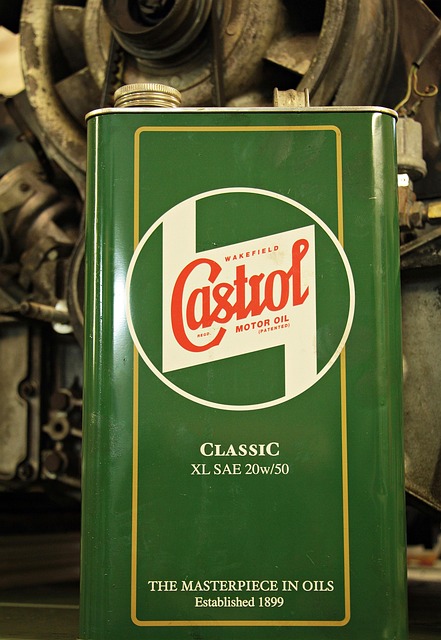Proper surface prep with cleaning and sanding is crucial before clear coat repair. Use automotive primer for better adhesion and durability. Choose a high-quality clear coat suited to your vehicle's needs and climate. Follow manufacturer guidelines for application and curing for optimal results in clear coat repairs.
After repairing your vehicle’s clear coat, preventing future damage is crucial. This guide will walk you through three essential steps to ensure long-lasting results. Firstly, thoroughly prepare the surface before repair, removing any contaminants and ensuring a clean canvas. Secondly, choose the right clear coat compatible with your vehicle’s paint. Lastly, follow correct application and curing procedures, including using recommended products and adhering to manufacturer guidelines, for a protective finish that wards off future damage.
- Prepare the Surface Thoroughly Before Repair
- Choose the Right Clear Coat for Your Vehicle
- Follow Correct Application and Curing Procedures
Prepare the Surface Thoroughly Before Repair
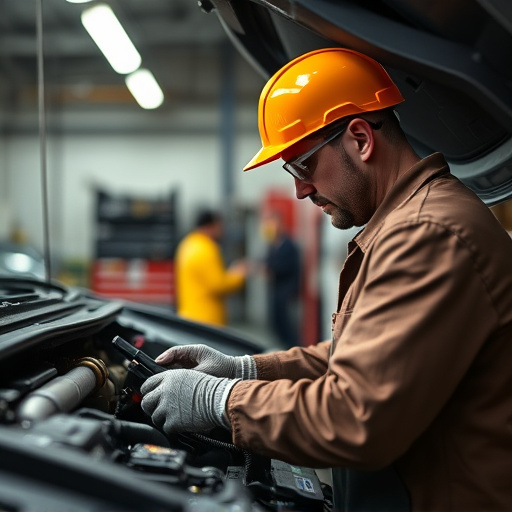
Before attempting any clear coat repair, ensuring the surface is thoroughly prepared is paramount. This involves meticulously cleaning the damaged area to remove any dirt, grease, or debris that could hinder the bond between the repair and the existing paint. A simple yet effective cleaning process typically includes washing the panel with a mild detergent and water, then using fine-grit sandpaper to smooth out any remaining imperfections.
Additionally, priming the surface is a crucial step often overlooked. Primers act as a bridge, ensuring the clear coat adheres smoothly to the repaired area. A good primer also helps to seal any pores or gaps left by the repair process, preventing future damage and enhancing the overall durability of the clear coat. At a collision repair center or vehicle body shop, professionals use specialized primers designed for automotive painting to ensure the best results.
Choose the Right Clear Coat for Your Vehicle
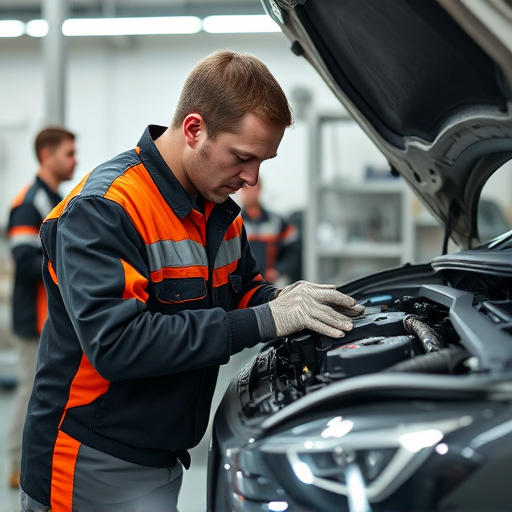
Choosing the right clear coat for your vehicle is a crucial step in ensuring long-lasting protection and preventing future damage after repair. Not all clear coats are created equal; different formulas offer varying levels of durability, resistance to scratches and stains, and UV protection. For automotive body work that requires high-quality, long-lasting results, opt for a clear coat designed specifically for fleet repair services or specialized body shop services. These products are engineered to withstand the rigors of daily driving and exposure to various environmental factors, providing a protective shield that can last for years.
When selecting a clear coat, consider the specific needs of your vehicle’s paint job. Factors such as climate, road conditions, and personal usage patterns should influence your decision. For instance, if you live in an area with frequent exposure to harsh weather conditions or high UV radiation levels, opt for a clear coat that offers superior resistance to weathering and fading. Regularly maintaining and reapplying the correct clear coat will not only enhance the aesthetics of your vehicle but also extend its lifespan, minimizing the need for future automotive body work repairs.
Follow Correct Application and Curing Procedures
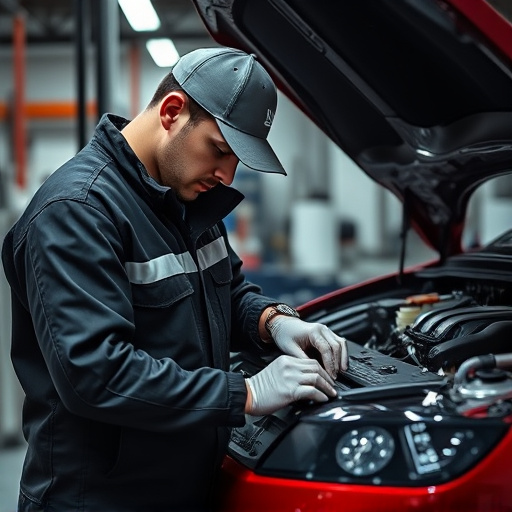
After clear coat repair, adhering to the correct application and curing procedures is paramount to prevent future damage. This means following the manufacturer’s guidelines closely, using high-quality products, and ensuring adequate time for the paint to cure fully before subjecting it to any stress or exposure. In an auto body shop, professionals understand that proper preparation and curing are crucial steps in achieving a durable, long-lasting repair.
For fleet repair services or paintless dent repair, paying extra attention to these details can save you from costly touch-ups down the line. The clear coat acts as a protective layer, shielding the base coat and underlying surfaces from environmental factors like UV radiation, chemicals, and physical impacts. By respecting the curing process, you ensure that this protective barrier is robust enough to withstand everyday use, preserving the vehicle’s aesthetics and extending the life of the repair job.
Preventing future damage is key to maintaining a flawless finish after clear coat repair. By thoroughly preparing the surface, selecting the appropriate clear coat, and strictly adhering to application and curing procedures, you ensure longevity and protect your vehicle’s investment. Remember, proper care during and after repair is crucial for a lasting, high-quality result.
